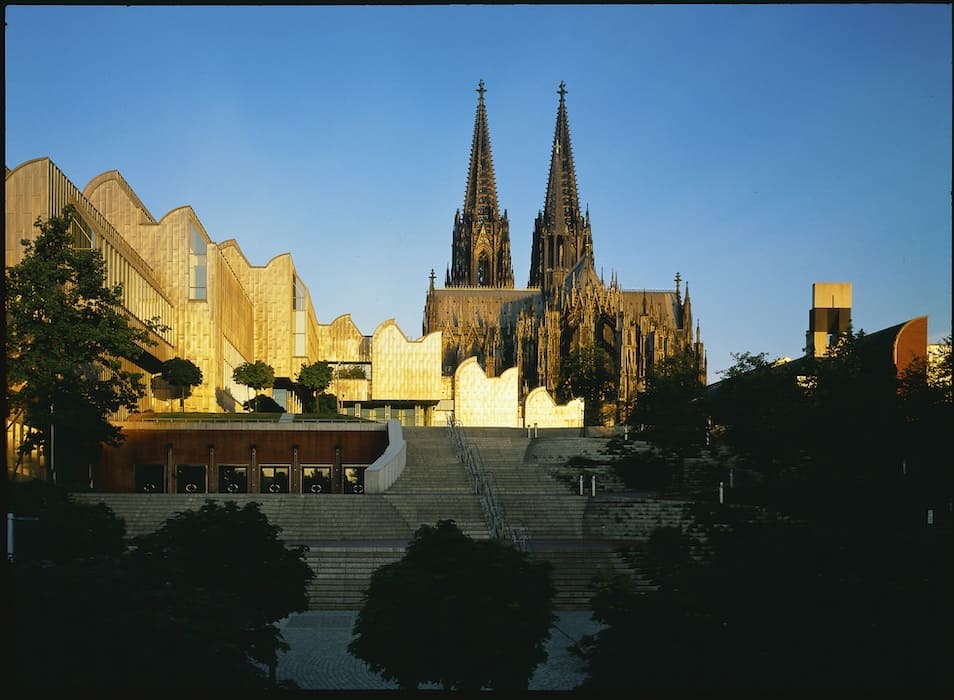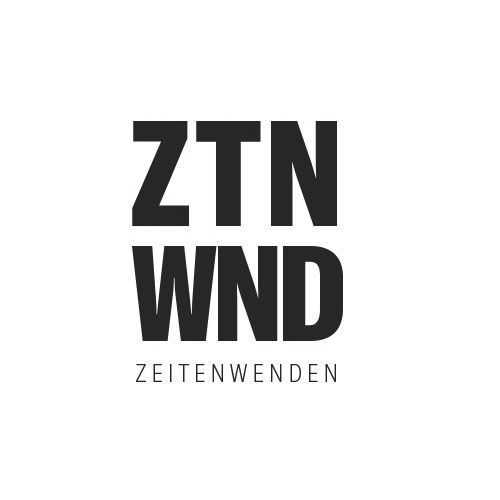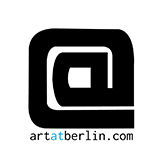Next week, the 58th ART COLOGNE will open its doors from 6 to 9 November 2025. In this interview, Daniel Hug, artistic director and director of the art fair, gives an initial overview of what’s on offer.
Photo above: The Museum Ludwig and Cologne Cathedral. Art Cologne.
Mr Hug, what are the highlights of the current edition of ART COLOGNE? Let’s start with the GALLERIES sector, which focuses on 20th and 21st century art.
It is particularly pleasing that two galleries from the United Kingdom have registered again. One is the Cristea Roberts Gallery from London, which last exhibited at ART COLOGNE before the pandemic. It is known for its top editions by artists such as Georg Baselitz, Jim Dine, Richard Long, Paula Rego and Tom Wesselmann. Not all of the works are blue-chip pieces; there are also more affordable editions. The other gallery is Richard Saltoun, with locations in London, New York and Rome. It represents many feminist artists from the 1970s and 1980s, including Annegret Soltau. Other artists will also be featured at its stand: Toyen, Romany Everleigh, Simryn Gill, Greta Schodl and Bracha Ettinger.
The Buchmann Gallery from Berlin has returned with artists such as Tony Cragg, Wilhelm Mundt and Bettina Pousttchi. Also back is the Kraupa-Tuskany Zeidler Gallery from Berlin, presenting works by Guan Xia, Brett Ginsburg and Pieter Schoolwerth. In the COLLABORATIONS sector, there are further new additions in the field of post-war art.
Another highlight in the GALLERIES sector is Galerie Anita Beckers, whose founder recently passed away. It is presenting a double exhibition with Annegret Soltau and Jürgen Klauke, two artists who were very active in the 1970s and 1980s.
And what is the situation in the NEUMARKT sector, i.e. contemporary art?
We now have 34 galleries in this sector, compared to 26 last year. That came as a surprise to me, too. The quality of the participants is very high. I think it’s very important that the new generation sees ART COLOGNE as relevant. For me, this growth is definitely a sign that the fair is an important trading venue for young international galleries.
Yehudi Hollander-Pappi is travelling from São Paulo. The gallery will not be presenting its own booth, but rather a rear wall, in front of which it will install a large-format mechanical installation by Adriano Amaral.
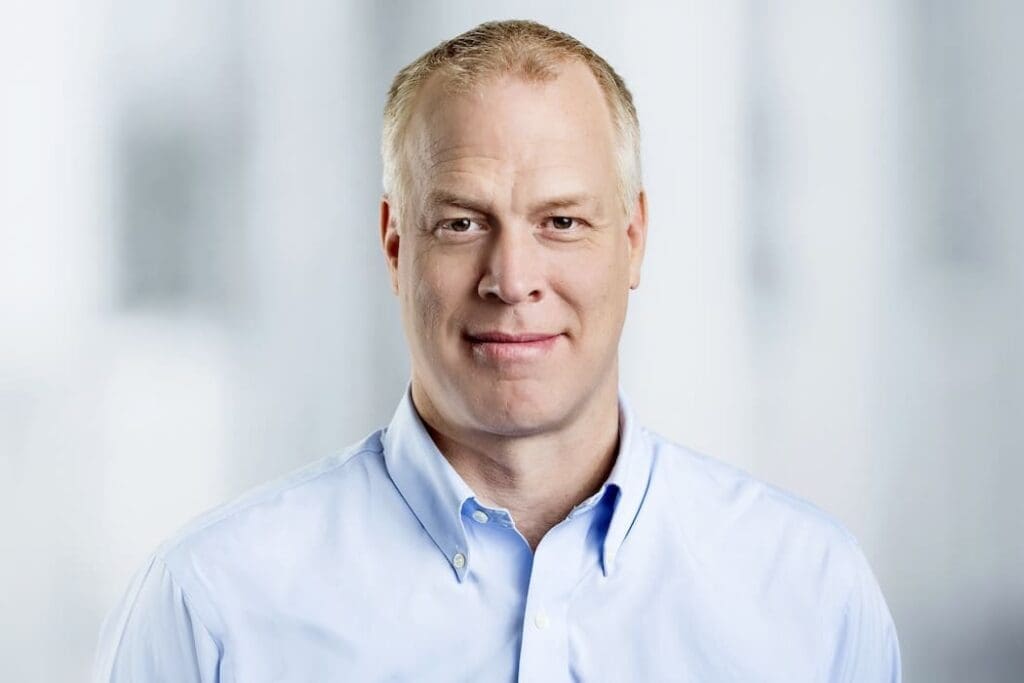
Can you name a few more newcomers and tell us something about their programme?
Sweetwater from Berlin is new to the fair. The six-year-old gallery has a very conceptual programme and is presenting works by Friedemann Heckel and Christopher Aque at ART COLOGNE. An intelligent programme.
Also appearing at the fair for the first time are The Pill from Istanbul with works by Nil Yalter and Özlem Altin, and The Stable from S-chanf in Graubünden with works by Patrick Salutt and Yves Scherer.
Clementin Seedorf is also a newcomer. It is a young gallery located in a hidden basement in Cologne’s Südstadt district. This is the first time they have applied to participate in an art fair. They have a very interesting programme. Works by Lukas Goersmeyer, Amelie Karweick and Max Sandfort will be on display.
Also represented at ART COLOGNE for the first time is the zaza’ gallery, with locations in Milan and Naples. The gallery is presenting works by Emanuele Marcuccio and Lydia Ourahmane. In addition, the entire stand will be vacuum-packed in plastic like a product in a supermarket. I would describe this as institutional criticism. The setup will be quite complicated.
Also important are Kandelhofer from Vienna with artists such as Acaye Kerunen, Marc Henry and Maximilian Prüfer, Galerie Koshba from Cologne with a solo presentation by Mitchell Kehe, LC Queisser from Cologne and Tbilisi with works by Rafik Greiss, Karlo Kacharava and Anton Munar, and Mountains from Berlin, who are back after a few years’ absence and presenting two artists, Lauren Coullard and Edi Dubien.
Is there a country focus this time as well? Last year, there were a striking number of galleries from Turkey represented at the fair.
From Turkey, Dirimart and Sevile Dolmacı are back again this year in the GALLERIES sector, as is Anna Laudel in the COLLABORATIONS sector. New to the fair is The Pill in the NEUMARKT sector.
In addition, more galleries from Spain are participating this year, including Galería F2 from Madrid and Galería Fermay from Palma. The COLLABORATIONS sector will also feature a joint Mallorcan stand, which will be shared by three galleries: Galeria Baro, LaBibi + Reus and Xavier Fiol from the Mallorcan gallery association Art Palma Contemporani. This association is our partner in the new ART COLOGNE PALMA MALLORCA, which will celebrate its premiere in April.
The COLLABORATIONS sector has also been strengthened. What concepts and interactions are there?
Take Die Galerie from Frankfurt, for example. It exhibits works by two artists, Johannes Heisig and Volker Stelzmann. Heisig is the son of the Informel painter Bernard Heisig, while Stelzmann is considered the father of the Leipzig School. Both work mainly in a figurative style.
The Galeria de las Misiones from Montevideo is also particularly interesting in this sector. It is exhibiting together with the Sammer Gallery from Miami Beach. Both galleries focus on pure abstract painting and specialise in Latin American constructivism and concrete art. They are presenting a solo exhibition by Tomás Maldonado (1922–2018), an Argentine painter and designer. Maldonado was a lecturer at the Ulm School of Design from 1955 to 1967, continuing the Bauhaus philosophy in the post-war period. It is very interesting to be able to show this at the art fair here in Germany, where this style was born. This will certainly also be of interest to institutions and collectors. I am very much looking forward to it.
Galerie Zink is collaborating with Galerie Bao from Paris, which specialises in art from Vietnam. That also sounds promising.
A+B Galerie and Rolando Anselmi are also participating in a COLLABORATIONS stand. New to the event is Jo van de Loo from Munich, who is collaborating with Galerie Sperling.
Why are more and more galleries interested in presenting jointly curated projects?
In difficult economic times, the COLLABORATIONS sector enables galleries to save money by implementing their presentations jointly. This also allows them to show projects that would not necessarily be financially viable. One example is an exciting collaboration between Max Goelitz from Munich and Temnikova & Kasela from Tallinn, which showcases works by Lou Jaworski and Katja Novitskova.
I also believe that interest has grown because we no longer separated the sector, but placed the COLLABORATIONS everywhere, including in the lower hall.
Have there been any changes to the hall layout?
Of course, we had to enlarge the NEUMARKT area.
There are still four plazas, but the plaza in the south-west corner of the hall has been enlarged. We will be building a small bar in this corner, which will be very pleasant.
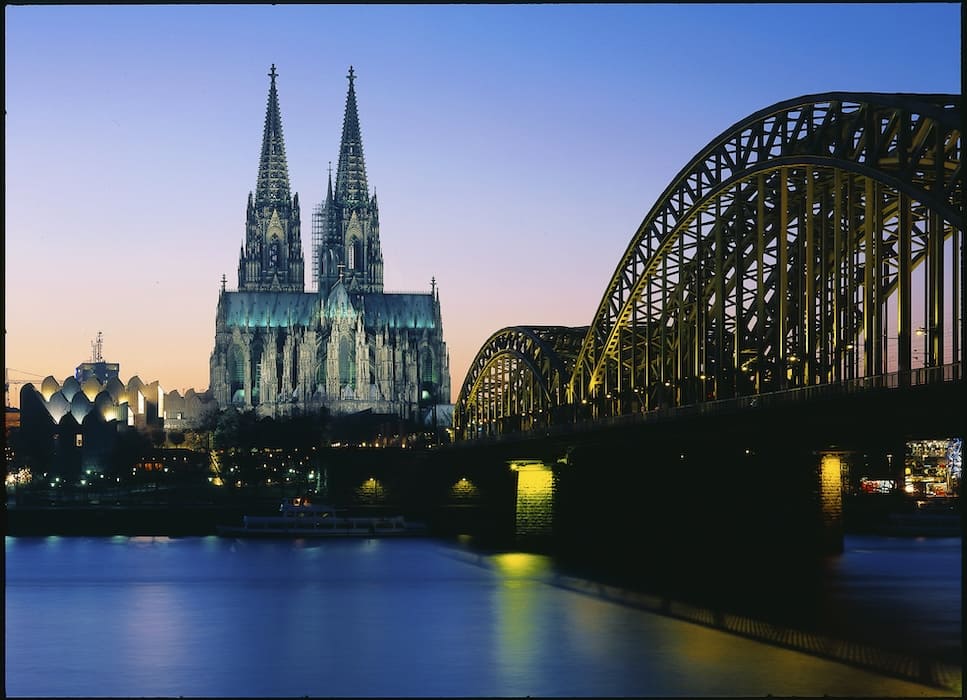
What can we expect in the ART + OBJECT section?
This year, the sector is more compact. Worth mentioning here is the Uitstalling Gallery from Genk and Poznan, which will present a solo show by the late artist Ado Hamelryck. Born in 1941 and deceased in 2024, the Belgian artist worked exclusively with the colour black. It will be a beautiful presentation. After all, ART + OBJECT also refers to historical positions, and we think this artist fits very well into this area.
The Kodlcontemporary gallery from Prague is also represented at ART COLOGNE for the first time. It is showing works by the painter and glass artist Ira Svobodová. Returning participants include Vivid from Rotterdam, 10 A.M. Art from Milan, and Sgr. a Jörg Jung and Kaune Contemporary, both from Cologne.
With 167 galleries compared to 175 galleries last year, the current edition of ART COLOGNE is somewhat smaller.
I think 167 participants is a good size. The fair was the same size in 1968, when ART COLOGNE was considered the most important art fair in the world.
What special exhibitions will there be?
Landesbank Baden-Württemberg (LBBW) is once again presenting a special exhibition. This time, the theme is ‘Klangwelten’ (Worlds of Sound). Curated by Barbara Thomann, around 40 works by artists on the theme of music, sound and resonance will be on display. These include works by Max Ackermann, E.W. Nay, Elizabeth Peyton, Martin Kippenberger, Isa Genzken and many others.
The Central Archive for German and International Art Market Research (ZADIK) is showing a presentation from Charlotte Zander’s collection. She began building her collection in the mid-1960s with works by artists who had not studied at an art academy. At the time, their works were referred to as ‘naive art’. The exhibition highlights the stages of the collector, gallery owner and museum founder’s life.
A huge bronze sculpture by Stefan Strumbel will be placed in front of the south entrance to the fair as a special exhibition, presented by Galerie Ruttkowski 68.
The art associations from North Rhine-Westphalia will share a joint stand where they will present their annual gifts. Valerie Knoll from the Kölnischer Kunstverein and Viktor Neumann from the Bonner Kunstverein approached me about this, and I thought the idea of a group initiative was a good one.
In addition, the Gesellschaft für Moderne Kunst will be exhibiting its acquisitions.
The Cologne Gallery Night will also take place as part of the supporting programme for the fair. Cologne’s galleries will remain open until 10 p.m. on Saturday, 8 November. Visitors will then be able to go directly from the fair to the city and visit the galleries. I think that’s great.
The economic outlook is currently anything but good. Will this have an impact on sales at ART COLOGNE?
Of course, the market has become more difficult, but this is more of a global issue. The national and European markets are still doing quite well. The situation here is not as bad as in the USA, where the crisis is clearly noticeable and galleries are having to close. Corrections in every market are normal. There are also advantages, because prices are falling or normalising. ART COLOGNE is fairly stable and less affected than fairs such as Frieze or Art Basel.
All the major galleries are back here in Cologne, and interest among young galleries in participating is growing. In addition, more galleries are moving to the city, such as LC Queisser from Tbilisi, which recently opened a branch in Cologne. This is also due to the city’s central location, close to Paris and Belgium and thus in the heart of Europe.
You said that the fair should be a place for exchange, inspiration and social reflection. How should we understand that?
Especially today, when everything is dominated by mobile phones and the internet, human encounters are all the more important. Personal exchange remains important.
That is one reason why art fairs will continue to exist in the future. It’s not just about promoting art – although that is actually the most important role of an art fair – it’s also about personal, physical encounters with art and exchanging ideas about its content with gallery owners, other collectors, curators and museum staff. That is the basis of a good art fair and will continue to play an important role in the future.
WHEN?
Vernissage: Thursday, 06. November, 4pm–8pm
Exhibition dates: Thursday, 06. November to Sunday, 09. November 2025.
Opening hours:
07.-08. November 2025: 11am-7pm
09. November 2025: 11am-6pm
WHERE?
Koelnmesse GmbH
Messeplatz 1
50679 Köln


